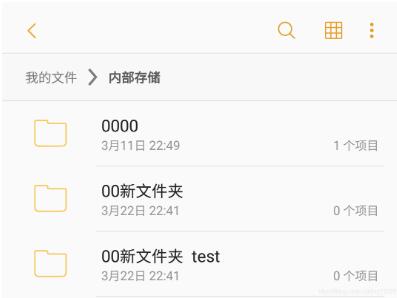Python os.path.exists()函數(shù)總是返回false的解決方案
如下面所示,如果我們用file的readline或readlines,在每一行后面都有一個n回車符
直接os.path.exists(readline)時總會返回false
>>> from os.path import exists>>> exists(’dog.png’)True>>> exists(’dog.pngn’)False
使用item.strip(’n’) #前面的item為我定義的變量
去掉后再傳遞給os.path.exists(item) 就OK了。
補充:當os.path.exists(path)的path中包含有空格時返回結果為False的解決方案
之前有個問題一直沒有解決, 當路徑中或文件名中存在空格時,用os.path.exists(path)判斷是否存在時,都會返回False. 百思不得其解. 今天在用ipython偶到想到想了解一下到底是什么原因?
事實上,當用input()接收path輸入時,path中有空格時,生成的str是不一樣的. 如下:
In [4]: path = input(’請將文件拖入:’)
請將文件拖入:'C:UsersxxxxxDesktopfilename with space.txt'
In [5]: pathOut[5]: ’'C:UsersxxxxxDesktopfilename with space.txt'’ In [6]: path1 = input(’請將文件拖入:’)
請將文件拖入:C:UsersxxxxxDesktopfilenamewithspace.txt
In [7]: path1Out[7]: ’C:UsersxxxxxDesktopfilenamewithspace.txt’ In [8]: os.path.exists(path)Out[8]: False In [9]: os.path.exists(path1)Out[9]: True
很明顯,帶有space時生了的str多了一層''字符串,故將多余的''去掉應該就可以了.以下為驗證實例
In [10]: path2 = path.replace(’'’, ’’) In [11]: path2Out[11]: ’C:UsersxxxxxDesktopfilename with space.txt’ In [12]: os.path.exists(path2)Out[12]: True
當前讀取手機存儲空間的文件時,當手機root目錄中存在還中文或帶空格的文件/文件夾時(如下圖),就會出錯.

一般這時為了要讀出這些文件夾,一般的操作為:
In [23]: cmd = ’adb shell ls /sdcard/’ In [24]: file_list = os.popen(cmd).readlines()---------------------------------------------------------------------------UnicodeDecodeError Traceback (most recent call last)<ipython-input-24-b7ae01065f81> in <module>----> 1 file_list = os.popen(cmd).readlines() UnicodeDecodeError: ’gbk’ codec can’t decode byte 0xae in position 10: illegal multibyte sequence
一般會報以上的錯誤或是不報錯,但是中文文件/文件名可能為亂碼,從以下的help(os.popen)可以了解后,os.popen()也是不能設置encode方式的,無解哈.
In [25]: help(os.open)Help on built-in function open in module nt: open(path, flags, mode=511, *, dir_fd=None) Open a file for low level IO. Returns a file descriptor (integer). If dir_fd is not None, it should be a file descriptor open to a directory, and path should be relative; path will then be relative to that directory. dir_fd may not be implemented on your platform. If it is unavailable, using it will raise a NotImplementedError.
所以又回到之前寫的一篇文章上,要用subprocess.run()全面替換掉os.system/os.popen,這樣就可以解決這些問題了.
In [27]: cmd = ’adb shell ls /sdcard/’ In [28]: file_list = subprocess.run(cmd, capture_output=True, encoding=’utf-8’, shell=True).stdout. ...: splitlines() In [29]: file_list[0:3]Out[29]: [’0000’, ’00新文件夾’, ’00新文件夾 test’]
故上兩個困擾了很久的問題,終于找到了解決方案,開心一下
以上為個人經(jīng)驗,希望能給大家一個參考,也希望大家多多支持好吧啦網(wǎng)。如有錯誤或未考慮完全的地方,望不吝賜教。
相關文章:

 網(wǎng)公網(wǎng)安備
網(wǎng)公網(wǎng)安備